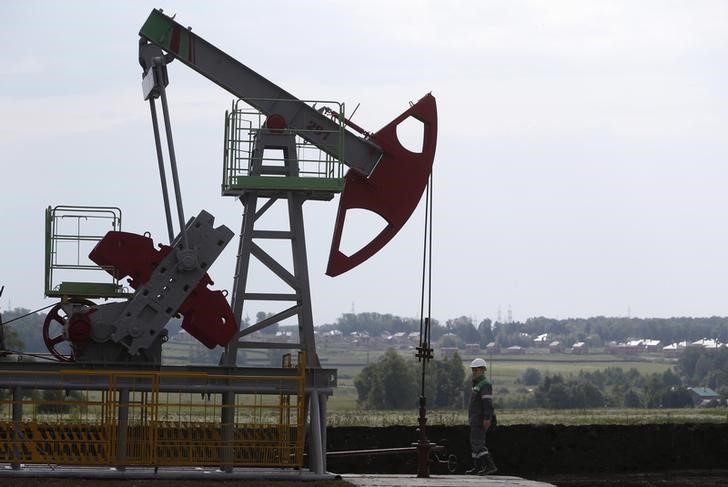* Available refining capacity to hit record highs in August
* Strong refining comes just as supply disruptions hit
market
* But stronger dollar weighs on oil markets
By Henning Gloystein
SINGAPORE, June 10 (Reuters) - Oil prices were stable in
early trading on Friday, supported by strong demand and global
supply disruptions, but a stronger dollar kept crude below the
2016 highs reached this week.
International Brent crude oil futures LCOc1 were trading
at $51.96 per barrel at 0101 GMT, up 1 cent from their last
settlement. U.S. West Texas Intermediate (WTI) futures were flat
at $50.56 a barrel.
Analysts said that a rebound in the dollar .DXY had dented
oil prices by making fuel imports for countries using other
currencies more expensive, but strong overall oil demand as well
as supply disruptions were supportives.
"Oil prices eased back from a near 12-month high as the
dollar reversed its recent trend," ANZ bank said on Friday.
"Despite falling slightly overnight, the outlook for oil
(prices) remains positive - which should keep the recent upward
trend intact," is added.
Crude prices have virtually doubled since hitting decade
lows in early 2016 as strong demand and supply disruptions erode
a glut that had pulled down prices by as much as 70 percent
between 2014 and early 2016.
Market rebalancing is ongoing. On the demand side, global
refining activity is about to hit its highest on record just as
crude supply disruptions around the world tighten the market.
Data in Thomson Reuters Eikon shows that available global
refining capacity will reach 101.8 million barrels per day (bpd)
in August, its highest on record, and up from around 97.25
million bpd in March.
Traders said that this means that producers need to pump
every barrel of crude they can to meet refinery demand, and that
the supply disruptions around the world - from Canadian
wildfires, Nigerian sabotage acts, and output cuts in the
United States, Venezuela, and Asia - will tighten the market and
eat into inventories.
Yet the strong refinery output could end as fast as it came
as the reserve capacity, the difference between available and
installed capacity, is about to fall below half a million bpd,
the tightest since late 2013, the data shows.
"Beyond the short-term bullishness the high refining
activity means for oil prices, this means that refinery activity
and, by extension, refinery crude demand, can basically only go
down as facilities either go into unplanned outage or refinery
runs are cut to reduce an emerging product glut," said one
trader in Singapore.
<^^^^^^^^^^^^^^^^^^^^^^^^^^^^^^^^^^^^^^^^^^^^^^^^^^^^^^^^^^^
COLUMN-Oil market is back in balance: Kemp
^^^^^^^^^^^^^^^^^^^^^^^^^^^^^^^^^^^^^^^^^^^^^^^^^^^^^^^^^^^>
